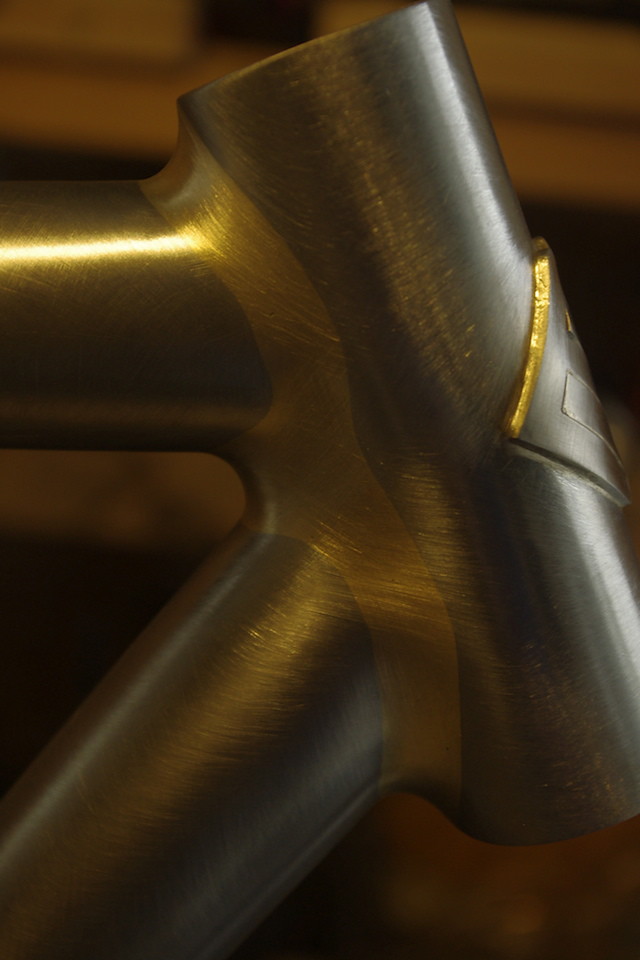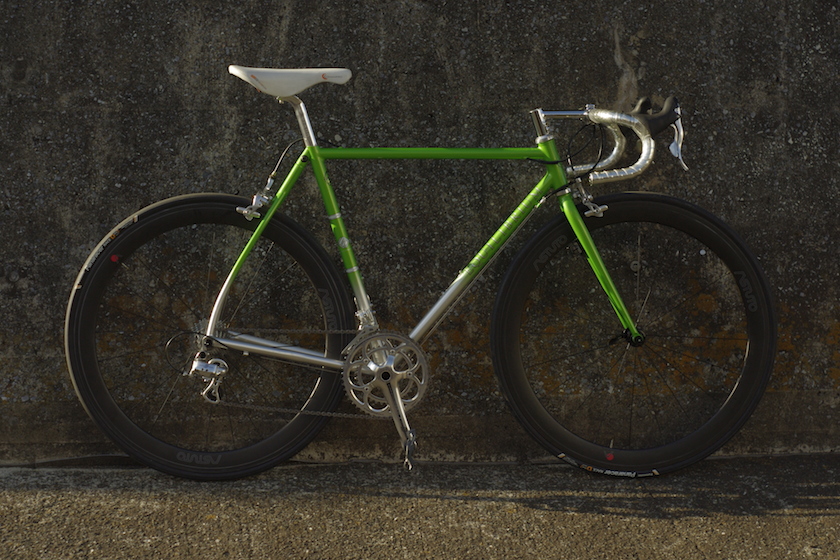The story of my path to frame building
It started very unexpectedly, once upon a time in London. All of the sudden I noticed gorgeous slim steel frames on the streets. Very soon after this, I bought an old Raleigh made from Reynolds 531. I didn’t have experience with racing bikes, and was surprised that the Raleigh pushed me to the edge all the time. I discovered new horizons with my new steel friend that never let me down.
The feeling of a freedom and simplicity of being made me think that a bicycle is one of the greatest devices ever invented. I was attracted to the simple lines and aesthetics of a steel frame. Almost from the first day of my romance with steel, I wanted to experience what it would be like to build one from scratch with my own hands. This was 7-8 years ago, but that desire never disappeared.
Later on I got sick with “fixed gear disease” and started to experiment with different parts, frames and materials, swapping around components, repainting frames, building the wheels etc. I spent a lot of time on the internet studying the cycling history and bicycle makers. In London, I met my future wife who was Japanese. She had to move back to Japan after her visa expired and I followed her a year later. To Japan I brought only myself, my fixing tools, and undisturbed belief that I’ll make a living from my passion.
For a while I stayed at home, learned some Japanese, and checked the internet for the cycling bargains. I sniffed around shops trying to figure out if there was chance I could become a part of the industry. I found a source in Italy with a huge vintage bicycle collection and started to bring them to Tokyo. I cleaned, fixed, and customized them on a tiny balcony in our one bed room apartment. I didn’t care about the space and circumstance; I’d sleep with a bike just to be able to keep on going.
Along with selling the bikes, I used to take them for the spin comparing different tubing, set ups, and brands. After a couple of years working on my balcony we moved to another place where I could have a separate space for my workshop. It was then that my desire to become a frame builder started to grow even stronger.
I looked around for a course or person who could introduce me to the trade. One evening I was walking around our neighborhood and noticed Mr.Ohtaki’s frame building shop. At the first meeting I didn’t dare tell him about my sacred dream, but I had a sense that he was quite open to communication. Fortunately I was able to speak some basic Japanese on a conversational level. After a few visits to his shop and bringing some frames to refurbish, I finally told him that I want to become a frame builder and asked what necessary equipment do I need to start with. Without any hesitation and asking for nothing in return, he gave me a list of tools and showed a place where I could get them. The list was pretty simple: iron surface plate, drill press, bench grinder, a few files, bevel protractor, height gauge and acetylene set up.
I still didn’t have a frame jig, so the first 3 frames were fitted and tacked on Mr.Ohtaki’s jig followed by the thorough explanation of the process. The things that he paid attention most were the strength, precision, and stress free construction. Building for Keirin is a highly competitive ground with the riders being very picky about the slightest detail, such as measurements and ride feel. Sometimes when a rider orders a few similar frames from one builder, he would complain after a short testing that one of them doesn’t feel right and he’ll never use that it anymore. That’s why the NJS stamp on the frame first of all stands for the craftsmanship and skill of the builder.
For me to witness that kind of attitude was very precious life changing experience. My mentor is a gentle and caring person on the outside yet with a strong and undisturbed core like a mountain deep down inside. I could watch his skillful moves forever, never analyzing but trying to tune up and get the feel rather mental conclusion. Nevertheless it was a very important to remember the order of the building process to minimize brazing stress. His approach is to build one joint at a time, starting with TT and HT then ST and TT align it on the surface plate by clamping HT in the fixture , then join DT, make sure all the tubes in one plane and parallel to the surface plate , then BB shell is brazed in. Like all Japanese builders he uses bronze for the brazing lugs and silver for the BB to keep that area with less damage to ensure spring like BB flex.
For the center alignment he uses torch, slightly heating particular areas of the tubes. I use same techniques with some changes because I use mostly silver for all my brazing. I can cut some corners because of lower brazing temperature and less heat distortion compared to using brass. Although I learned the sequence form my mentor, the brazing I do is the result of a lot of practice and experimenting with flame sizes, fluxes, and brazing rods.
I’ve never been rejected when asking for advice or help. I could always use all the tools in Mr.Ohtaki’s workshop. He was always willing to explain whatever I was stuck with. Once I showed up unannounced, and he put aside his own work and was ready to give me a hand. It was a true revelation of real Japanese spirit. I took lessons not only in frame building but also in a way of living.
Our communication helped me to prioritize what was important in building the frame; is it made for the customer to satisfy his needs or do I make it to satisfy my own ego? These days in Japan it’s quite common to see young builders doing all crazy stuff trying to impress each other by using exotic shapes and decorative details. In that respect I’m very grateful to my teacher for setting me up on the right track from our first meetings.
I just want to mention a few words about the concept behind my brand, Equilibrium Cycle Works. It’s a constant reminder to not to get lost on the way and always remember why I’m here. Equilibrium is a state of balance when two opposite parts merge into the One and bring unconditional happiness and joy of living. It’s directly related to what I’m going through and the kind of experience I’d like to share. I build frames because I enjoy every moment of it and never get in a rush to finish it off just to see the final result. For now my goal is to build simple, quality frames and extend my education in cycling.
Despite having a full time mentor, making a living by building frames in Japan is a very hard job; the hardest part is not the making, it’s the selling. The market is very specific and people are used to trusting established names only. Not many can see and understand the craftsmanship of the product. They are fascinated by the heritage and want to belong to the lifestyle of prestige and status.


 Likes:
Likes: 


 Reply With Quote
Reply With Quote




Bookmarks